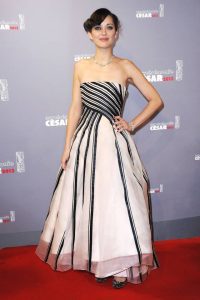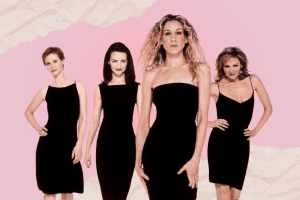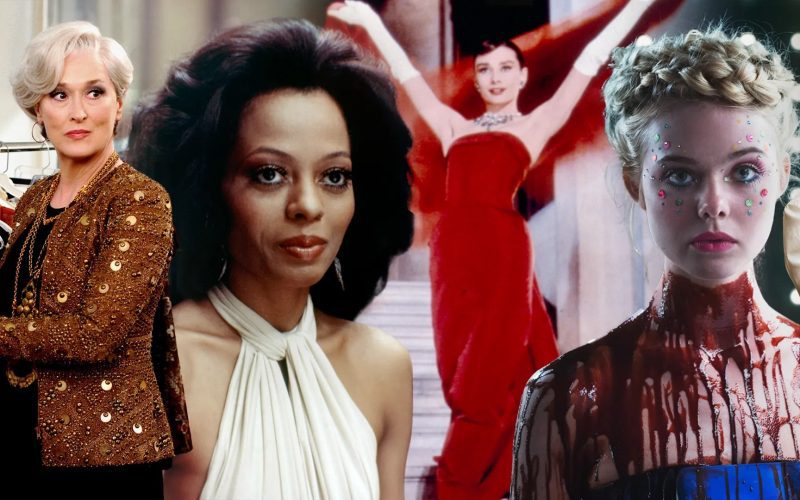Introduction
Movies have always had a profound impact on popular culture, shaping the way we think, behave, and even dress. The fashion industry, in particular, has long drawn inspiration from the silver screen, with iconic movie characters, glamorous red carpet moments, and unforgettable style choices becoming benchmarks for fashion trends. From Audrey Hepburn’s timeless elegance in Breakfast at Tiffany’s to the bold looks seen in The Devil Wears Prada, the influence of movies on fashion is undeniable. This article explores how movies influence the fashion industry, including iconic cinematic styles, collaborations between designers and filmmakers, and the enduring impact movies have on trends, consumer behavior, and the fashion world’s evolving landscape.
The Power of Iconic Movie Fashion

Movies create characters whose wardrobes become part of their identity. Fashion in films often becomes symbolic, embodying not just personal style, but also cultural movements, social classes, and political statements. One of the most notable examples is the little black dress worn by Audrey Hepburn in Breakfast at Tiffany’s. Created by designer Hubert de Givenchy, the dress became a symbol of elegance and sophistication, inspiring generations of women to embrace minimalist fashion.
Similarly, the bold looks worn by characters in movies like Clueless and Sex and the City have left lasting marks on fashion. Cher Horowitz’s preppy outfits and Carrie Bradshaw’s designer-filled closet are now etched in the fashion consciousness. These movies demonstrated how a character’s style could influence trends for years to come, with real-life designers taking cues from their on-screen wardrobes.
Movies as Trendsetters in Fashion

Movies not only showcase fashion but also set trends that influence what is seen on runways and in retail stores. For example, the Matrix films, with their dark, sleek leather jackets and futuristic designs, influenced fashion trends in the late ’90s. The film’s leather coats, sunglasses, and combat boots became a signature look, inspiring designers to create similar styles for the masses.
In the 2000s, the Devil Wears Prada revolutionized fashion with its portrayal of high fashion at the fictional fashion magazine Runway. Meryl Streep’s character, Miranda Priestly, and Anne Hathaway’s character, Andrea Sachs, wore some of the most luxurious and cutting-edge designs in fashion, promoting the idea that the fashion industry was a powerful, glamorous force. This led to a rise in demand for high-fashion brands like Prada, Chanel, and Valentino among fashion-conscious consumers.
Similarly, movies like The Great Gatsby (2013) brought back 1920s fashion, with its flapper dresses and sharp tuxedos. Costume designer Catherine Martin’s work on the film inspired a revival of the Roaring Twenties style, influencing both runway collections and high-street brands.
Celebrity Red Carpet Fashion and Its Influence

The red carpet is another area where movies and fashion intersect, with celebrities often using these events to showcase their personal style. The Oscars, Cannes Film Festival, and Golden Globe Awards have become fashion showcases, where stars wear custom-designed outfits that set trends for months.
One of the most notable examples is the relationship between actress Marion Cotillard and designer Christian Dior. Cotillard’s appearances at red-carpet events wearing Dior’s couture collections helped elevate the designer’s status in the fashion industry. Similarly, actresses like Angelina Jolie, Jennifer Lopez, and Zendaya have all used their red-carpet appearances to bring attention to specific designers, influencing consumers’ buying decisions.
These red-carpet moments also help create a more accessible version of luxury fashion. The outfits worn by stars often inspire mass-market interpretations of high-fashion styles, allowing consumers to emulate the looks they see on screen. Retailers and designers pay close attention to red-carpet trends to ensure they meet consumer demand for similar looks at more affordable prices.
The Role of Fashion Designers in Film Collaborations

Another way movies influence fashion is through direct collaborations between designers and filmmakers. Filmmakers and costume designers work closely with fashion houses to create looks that reflect the characters’ personalities and the film’s overall aesthetic. This synergy between fashion and film has led to a deeper connection between the two industries.
For instance, in The Hunger Games, costume designer Judianna Makovsky worked with the fashion house of Atelier Swarovski to create pieces that conveyed the dystopian world of Panem. The movie’s futuristic costumes, along with the introduction of “Capitol Couture,” led to a new wave of interest in avant-garde, dystopian-inspired fashion. The collaboration between fashion designers and movie productions can sometimes influence the development of new collections, making the collaboration mutually beneficial.
Movies also help promote lesser-known designers, providing them with a global platform. For example, in Black Panther, costume designer Ruth E. Carter worked with brands like Miuccia Prada’s Prada and Marvel to bring African-inspired designs into the fashion spotlight. The costumes in Black Panther were praised for their cultural significance, but they also helped spotlight global designers and their work, leading to more widespread recognition.
The Impact of Fashion on Movie Characters

On the flip side, fashion also plays a crucial role in shaping a movie’s characters. Often, a character’s wardrobe can determine how they are perceived by audiences. In The Devil Wears Prada, the fashion choices made by Anne Hathaway’s character, Andrea Sachs, signify her transformation from a naïve assistant to a confident, polished professional. Her style evolution mirrors her personal growth, and the fashion decisions made by the costume designer help tell the story visually.
Movies like The Hunger Games and The Matrix also rely heavily on fashion to express characters’ identities. Katniss Everdeen’s iconic Mockingjay pin and leather attire serve as a symbol of rebellion, while Neo’s sleek, futuristic wardrobe defines his role as the “chosen one.” These character-defining outfits make fashion an integral part of storytelling, enhancing the movie’s narrative.
Movies as Trendsetters

Movies have always been trendsetters, introducing new styles and looks that inspire the fashion world. Whether it’s a specific character’s outfit or a particular theme in a film, movies have a way of making a lasting impact on what people wear. For example, the sleek, dark leather jackets from The Matrix became a fashion must-have in the late ’90s. Similarly, the bright colors and patterns seen in Clueless influenced the preppy fashion of the ’90s. These trends from movies don’t just disappear after a film is released—they continue to shape fashion choices for years.
Celebrity Influence on Fashion

Celebrities often play a huge role in connecting movies to fashion. When a movie star wears a particular outfit, it can quickly become a trend. Celebrities use red-carpet events, movie premieres, and even everyday street style to showcase their fashion choices, which many fans then follow. Actresses like Audrey Hepburn, Marilyn Monroe, and Zendaya have all become fashion icons because of their roles in films and their personal style. Their outfits influence not only moviegoers but also designers and retailers, who create pieces inspired by the stars.
Fashion Designers in Film Collaborations

Fashion designers often work closely with filmmakers to create costumes that will bring the story and characters to life. These collaborations are essential to both the fashion and film industries. Designers like Oscar de la Renta, Giorgio Armani, and Miuccia Prada have worked on creating iconic movie costumes. In Black Panther, the African-inspired designs by Ruth E. Carter helped bring the fictional world of Wakanda to life. This type of collaboration not only promotes the designer’s work but also brings a unique, cultural, and artistic element to the film.
Fashion as a Marketing Tool in Movies

Fashion also acts as a powerful marketing tool in movies. When a popular character wears a specific outfit or brand, it can lead to a surge in sales for that brand. Movies like Sex and the City and The Devil Wears Prada showcased luxury brands, which then saw an increase in demand from viewers who wanted to recreate the looks. This has led to fashion brands collaborating with filmmakers, allowing the movie industry to help promote real-life clothing lines. In this way, fashion becomes a strategic tool that both enhances the film’s appeal and drives commercial success.
The Challenges of Movies in Fashion
While movies have a positive impact on fashion, there are also challenges. One challenge is that not all styles seen on the big screen are practical for everyday wear. Some trends introduced by films may not appeal to everyone or may be too expensive for the average person. Additionally, fashion in movies sometimes reinforces unrealistic beauty standards, which can negatively affect how people view their own style and body image. Despite these challenges, the connection between movies and fashion remains strong, although it requires careful consideration.
The Future of Movies and Fashion

The future of movies and fashion looks bright, as both industries continue to evolve together. With technology advancing, filmmakers are able to create even more detailed and creative costumes that push the boundaries of fashion. Collaborations between designers and filmmakers will likely grow, bringing new ideas and fresh trends to both industries. The rise of social media and online shopping will also help people access the fashion seen in movies more easily. As the relationship between movies and fashion continues to develop, we can expect to see even more exciting and innovative styles emerge.
Analysis Table: How Movies Influence Fashion Trends
| Factor | Movies’ Influence on Fashion | Examples |
|---|---|---|
| Iconic Characters | Movies create iconic looks that influence long-lasting trends | Audrey Hepburn in Breakfast at Tiffany’s |
| Movie-Themed Fashion Trends | Movies set trends that designers and retailers follow | The Matrix leather jackets, Clueless plaid outfits |
| Celebrity Red-Carpet Fashion | Red-carpet events showcase new fashion trends | Zendaya’s red-carpet appearances |
| Fashion Designers in Film | Designers collaborate with filmmakers to influence character style | The Hunger Games, Black Panther |
| Character-Defining Fashion | Characters’ wardrobes help tell a movie’s story | Andrea Sachs in The Devil Wears Prada |
Comparative Table: Movies vs. Fashion Industry Influence
| Aspect | Movies Influence on Fashion | Fashion Industry Influence on Movies |
|---|---|---|
| Trendsetting | Movies introduce or popularize new fashion trends | Fashion designers help shape characters’ looks in films |
| Cultural Impact | Movies mirror social movements and cultural shifts | Fashion trends shape movie character identity |
| Access to Fashion | Movies make luxury fashion more accessible through mass-market copies | High-end designers create exclusive outfits for movies |
| Celebrity Influence | Celebrities’ red-carpet appearances in films set trends | Fashion shows and celebrity endorsements impact film budgets and costume choices |
Conclusion
Movies and the fashion industry share a symbiotic relationship, with each influencing the other in profound ways. Films have the power to shape trends, introduce iconic styles, and bring designers into the spotlight, while fashion has the ability to transform how characters are perceived on-screen. Whether it’s through red-carpet moments, designer collaborations, or character-defining wardrobes, the connection between movies and fashion continues to shape the cultural landscape. For fashion enthusiasts and movie lovers alike, the intersection of these two powerful industries offers endless inspiration, ensuring their enduring impact on each other for years to come.












